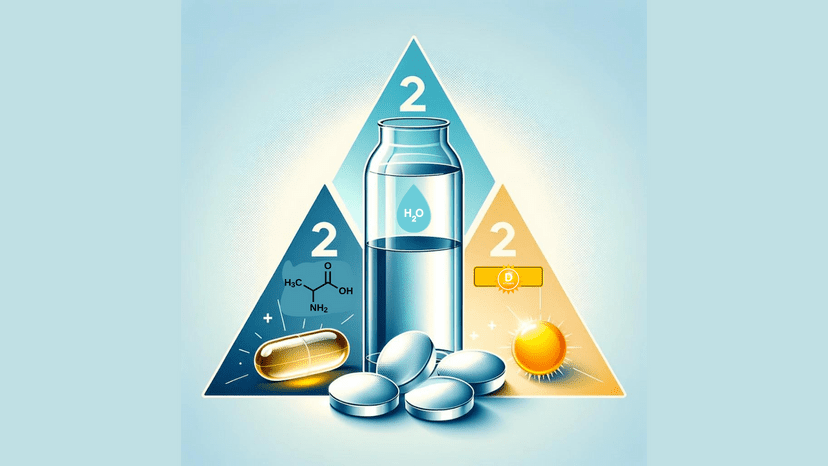Can You Physically Feel Fat Burning?

Understanding Fat Burning
To dwell deeply into our topic, "Can you physically feel fat burning?" it is crucial to develop an understanding of what fat burning means from a physiological perspective. Firstly, fat burning refers to the process of the body converting stored fat to energy. This conversion is a complex process that involves multiple physiological pathways, majorly governed by our metabolism.
The Science of Fat Burning
Interestingly, the human body is a powerhouse that relies on a variety of nutrients to fuel its countless functions. An important part of this powerhouse is fat, a high-energy nutrient. During a state of calorie-deficit, the body prefers to utilize the stored adipose tissue, also known as body fat, as a primary energy source. The process begins with the mobilization of the stored fat in adipose tissues, followed by transportation to the liver cells. In the liver cells, a series of chemical reactions take place to convert the triglycerides and fatty acids into a usable form of energy.
However, it is important to keep in mind that this process of converting stored fat to energy doesn't happen without the impact of certain factors like physical activity, diet and metabolic rate. For instance, high intensity exercises tend to aid the fat burning process.
Metabolism and Energy Conversion
Metabolism plays a vital role in the fat burning process. It is the sum total of all the chemical processes taking place in your body at a given time. Some people have higher metabolic rates and tend to burn fat more easily compared to others. Your metabolism is influenced by factors such as age, sex, body composition, and genetics.
Even more interestingly, not only does the body burn fat during high metabolic activities, but also during rest. This is known as the Resting Metabolic Rate (RMR), which indicates the number of calories your body needs to perform vital functions at rest.
The efficiency with which our bodies convert stored fat into energy largely depends on the metabolic rate. Therefore, when aiming for fat loss, it is not only important to focus on calorie burning physical activities but also adopting lifestyle changes that could potentially boost metabolic rate.
Debunking Common Myths
A common myth that circulates broadly is the idea of feeling fat burn. Individuals tend to associate the heat and sweat generated during an intense workout as indicators of fat burning. However, this is a misconception. The heat and sweat are results of increased body temperature and energy utilization but aren't necessarily directly linked to fat loss. These are more related to water loss through sweat and not fat loss.
Moreover, another common misconception is that fat loss spots are certain. This concept of spot reduction is scientifically disproven. The loss of fat does not occur in one specific area, rather it happens all over the body uniformly.
In conclusion, understanding the science of fat burning, metabolism, and energy conversion leads to a logical and effective approach towards achieving sustainable fat-loss goals. It is important to avoid misconceptions that could impact your health and fitness goals negatively in the long run.
Sensations Associated with Fat Loss
When embarking on a journey to shed off excess body fat, it's normal to wonder if there are any physical sensations or experiences associated with burning fat. Knowing what to expect can prepare you mentally and emotionally, thus increasing your odds of success.
Losing fat is a complex process involving numerous bodily mechanisms. It stands to reason that as your body goes through these changes, you may experience certain physical sensations. However, it's important to note that these sensations are often indirectly related to fat loss, as they might be a product of lifestyle changes such as exercise, or changes in your diet.
Physical Feelings During Exercise
When you engage in physical activity, particularly high-intensity workouts, you'll certainly feel a variety of sensations. You might feel your pulse rate increasing, a buildup of heat as your muscles work, and your body starting to sweat. These are all normal responses to exercise and are an indicator that your body is burning calories. However, this doesn't directly translate to the actual burning of fat. Instead, these sensations are indicative of your metabolic rate increasing, which is a prerequisite for fat burning.
Sometimes, people mistake the "burn" they feel during intense muscle contractions for fat burning. Called the muscle "burn", this sensation is caused by the buildup of lactic acid, a by-product of vigorous exercise, and not by fat being burned. While the exercise contributing to this feeling will ultimately assist in fat loss if done regularly and in combination with a proper diet, the feeling itself is not indicative of fat loss.
Hunger and Fullness Cues
Changes in your dietary habits can also give rise to different physical sensations. For instance, if you start consuming fewer calories than your body is accustomed to, you'll likely feel hungry more often. On the other hand, filling your plate with protein-rich and fiber-rich foods can lead to a sensation of fullness, even though you're consuming fewer calories.
Feelings of hunger and fullness are triggered by hormonal responses to the amount and type of food you eat. While these sensations might coincide with your fat loss journey, they are not directly tied to the moment your body burns fat. Instead, they serve as cues for your eating behavior which, when heeded appropriately, can lead to a calorie deficit, a necessary condition for fat loss.
Misinterpreting Bodily Sensations
It's easy to misinterpret bodily sensations and attribute them to a particular cause. For instance, some people might associate the sensation of feeling lighter or having more energy with their bodies burning fat. While these are positive changes and can be associated with healthy lifestyle adjustments, they're not concrete indicators of fat loss.
What is important to keep in mind is that burning fat is primarily an invisible process happening inside your body, without specific sensations attached. Rather, the most reliable way to monitor your fat loss progress is by tracking changes in your body composition over time.
In conclusion, while the process of losing fat may cause various physical sensations, many of these are indirectly related to the 'mechanism' of fat burning and are oftentimes a result of the lifestyle changes you've made to promote fat loss.
Indicators of Fat Burning and Weight Loss
As someone interested in personal health and fitness, you may wonder if there are tangible ways to notice when your body is burning fat. It's critical to understand that feeling fat burning isn't as straightforward as it seems. Optimally, the most reliable indicators of fat burning and weight loss include changes in your body composition, variations in your energy levels and performance, and understanding the indicators of long-term weight loss. Herein, we debunk the misconceptions and provide the scientifically-backed facts on this widely asked question.
Measuring Changes in Body Composition
To identify whether your body is burning fat, it's beneficial to observe changes in your body composition. Your body composition refers to the proportion of fat and fat-free mass in your body, which includes muscle, bones, and organs.
You can measure changes in body composition through various ways such as calipers, bioelectrical impedance analysis (BIA), dual-energy X-ray absorptiometry (DEXA), and air displacement plethysmography. However, it's important to remember that all methods have their limitations and margins of error.
A reliable indication of fat burning is when there's a decrease in the body fat percentage, even if the scale's number hasn't drastically reduced. This phenomenon could be because your body is building muscle as it's losing fat, a process known as body recomposition. Losing weight does not always signify fat loss, as weight loss can also derive from muscle and water loss.
Observing Energy Levels and Performance
Your energy levels and performance could also indicate whether you're effectively burning fat. In the initial stages of an exercise regimen or dietary shift, you may experience energy dips, fatigue, or slight decreases in performance. This response is your body adapting to a new condition, particularly if it's starting to utilize more stored fat for energy.
However, as your body becomes more efficient at fat burning, you might observe significant improvements in endurance during aerobic activities. Such is because your body has developed its ability to metabolically utilize fat as a fuel source. Notably, don't rely solely on these measures as they can be influenced by other variables such as hydration, sleep, and stress.
Understanding Long-term Weight Loss Indicators
A crucial aspect to acknowledge is that fat burning should ideally be a part of a long-term healthy lifestyle adjustments. Therefore, the most convincing evidence of effective fat burning and weight loss are sustainable lifestyle changes and subsequent effects over time.
Success in this journey is denoted by various long-term indicators such as:
- Gradual loss of weight over time (about 1-2 lbs per week for most people)
- Maintenance of lost weight
- Improved muscle tone
- Better sleep quality
- Enhanced mood and mental clarity
- Increased physical performance
Persistently feeling fat burning or losing weight excessively quickly might be your body's cry for help, not a sign of successful weight loss. Rapid weight loss can often lead to loss of muscle mass or critical nutrition deficiencies.
In conclusion, while you may not physically feel fat burning, you can keep track of various signs to know if your body is indeed losing fat. Focusing on your body composition, energy levels, overall performance, and understanding what healthy, long-term weight loss looks like are all important in accurately gauging your progress. Remember, true and sustained fitness revolves around fostering a sustainable, healthy lifestyle, not quick-fix solutions or fleeting sensations.
In Summary
After exploring the intertwined realms of fat burning, metabolism, and energy conversion, we've debunked several myths and misconceptions surrounding the idea of physically feeling fat burning.
As a point of clarification, it's important to understand that fat burning refers to the physiological process where the body converts stored fat to energy. This conversion process is influenced primarily by physical activity, diet, metabolic rate, and it doesn't necessarily produce sensations that we can physically feel.
The various physical sensations that we may experience, such as muscle "burn" during intense workouts or feelings of hunger and fullness, aren't direct indicators of fat burning. Instead, these sensations are correlated with increasing metabolic rate or altering dietary habits, both prerequisites for the fat burning process.
We also recognized that spot reduction is a myth, thus, fat is lost all over the body uniformly. It's critical to look beyond immediate sensations for reliable indicators of fat loss.
As accurate indicators of fat burning and weight loss, changes in body composition, variations in your energy levels and performance, and monitoring the indicators of long-term weight loss offer the most substantial evidence of your body effectively converting stored fat into energy.
The journey of weight loss involves not only shedding excess fat but also fostering a balanced, sustainable lifestyle. Understanding this concept will ensure that any weight loss effort keeps adding health benefits in the long run.
Given our exploration of these concepts, a plan of action to effectively manage and track fat loss might include the following steps:
- Get your body composition measured, understand your Body Fat percentage compared to other components.
- Incorporate regular, balanced physical activity into your routine. This may include both high and low-intensity workouts.
- Maintain a dietary regimen that promotes a calorie deficit but also fulfils primary nutritional requirements.
- Regularly monitor changes in your body composition and energy levels.
- Avoid misinterpreting physical sensations during exercise or hunger cues as direct indicators of fat burning.
- Consider seeking professional guidance to optimize your metabolism and facilitate robust, sustained weight loss.
- Measure your progress, considering variables such as improved muscle tone, enhanced sleep quality, and increased physical performance over time.
- Adopt a consistent, long-term approach rather than seeking 'quick-fix' solutions or changes.
Achieving effective, long-term fat loss often means understanding your physique, addressing its unique needs, and continuously adapting your lifestyle in response to these needs. This knowledge will be your best guide in maintaining a healthy bodyweight and achieving your fitness goals.





